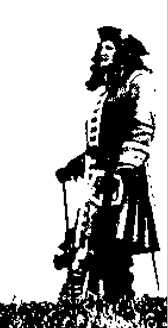The book ‘Oudenaarde 1708, a town, a king, a general’ tells the fascinating and detailed story of the Battle of Oudenaarde, which took place on 11 July 1708 during the War of the Spanish Succession.
If you are interested in the history of Oudenaarde and its vicinity (even Flanders as a whole) you will find here texts and data about the 17th and 18th centuries in our regions, which have never been published before.
The book has about 130 very beautiful illustrations, among other things a number of unique photographs of the scale-model of Oudenaarde and reproductions of little-known maps of the town.
The book provides a wealth of information about how people lived in Oudenaarde and its vicinity in the beginning of the 18th century.
The following authors contributed:
- Dr. Martine Vanwelden: De historische evolutie van de stad Oudenaarde tot aan het begin van de 18de eeuw. Facetten van een stadsgeschiedenis. (The historical evolution of the town of Oudenaarde till the beginning of the 18th century. Aspects of a town’s history.)
- Drs. Klaas Van Gelder and Prof. Dr. René Vermeir: De Habsburgse Nederlanden in de overgang van Spanje naar Oostenrijk, 1692-1713. (The Habsburg Netherlands during the transition from Spain to Austria, 1692-1713.)
Frederik Dhondt: De Spaanse Successieoorlog en de slag bij Oudenaarde (11 juli 1708). (The War of the Spanish Succession and the Battle of Oudenaarde 11 July 1708.)
- Pieter-Jan Lachaert: Leven langs de Schelde aan het begin van de 18de eeuw. Een manuscript uit Eine over de slag bij Oudenaarde en de krijgsverrichtingen in de Spaanse Successieoorlog (1708-1711). (Life along the river Scheldt at the beginning of the 18th century. A manuscript from Eine about the battle of Oudenaarde and the military operations in the War of the Spanish Succession 1708 – 1711.)
- Dr. Luc Van Durme: De plaatsnamen in de omgeving van het slagveld. (The toponyms in the vicinity of the battlefield.)
- Prof. Dr. Nicolas Faucherre: De maquette van Oudenaarde van Nézot uit 1746. (The scale-model of Oudenaarde by Nézot from 1746.)



